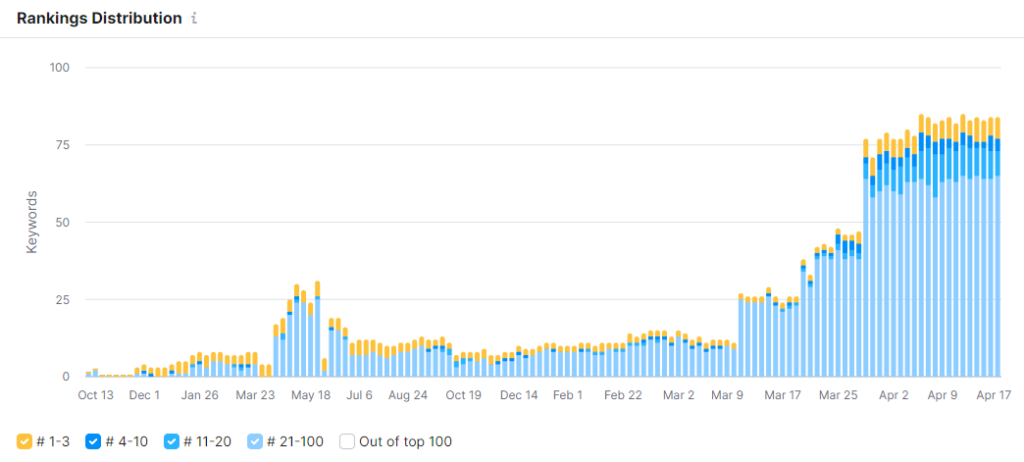
Search engine optimization is a critical component of any successful digital marketing strategy. In today’s digital age, businesses of all sizes need to have a strong online presence to be successful. Our tactics can help businesses to:
- Improve their visibility in search engine results pages (SERPs)
- Attract more traffic to their websites
- Ultimately increase their sales and revenue
On Page SEO refers to the elements on a webpage that can be optimized to improve its relevance and authority for search engines. This includes things like headings, body content, meta data, and internal links. On page optimization is usually easiest to do during the creation of the site.
Having to go back through the site at a later date can be a long process that could cause unforeseen errors. This is a technical SEO strategy that is usually only executed by more experienced online marketing companies.
The second part is Schema Markup. This is a type of code that can be added to a webpage to help search engines understand the content on the page. This is best to do while the site is underdevelopment.
Sifting through thousands of lines of code after the fact can be much more time consuming and expensive (unless you have an advanced front end editor such as Elementor).
By using both On Page SEO and schema markup together you can create a synergy that propels your business up in the rankings.
In the following sections, we’ll be discussing the importance of on-page SEO and schema markup in greater detail, and providing actionable tips for optimizing your content for search engines.
So without further ado, let’s dive into the world of on-page SEO and schema markup!
What is On-Page SEO?
On-page SEO refers to the practice of optimizing the elements on a webpage to improve its relevance and authority for search engines. This includes optimizing the content on the page itself, as well as the HTML source code that makes up the page. On page optimization can also be carried out by some of the more seasoned content marketing companies as well.
On-page SEO is important for improving search engine rankings, as it helps search engines to better understand the various sections and content on the page and its relevance to user search queries.
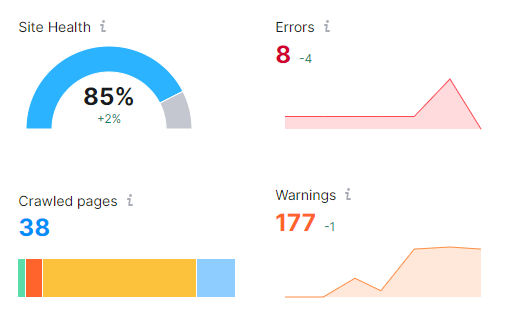
SEO Site Audit
By paying attention to your pages by performing site audits you can easily measure the changes you make to your site. Be aware, while there are many free tools on the web many of these are not updated daily. For up to date audits and information please contact us directly for a free SEO site audit.
The Elements of On Page Optimization
There are several different elements of on-page SEO that businesses can optimize to improve their search engine rankings.
Headings
Headings consist of tags from H1 through to H6. These are used to structure the content on a webpage and help search engines to understand the hierarchy of the content.
By using a H1 header for the page, you can work your way down into multiple sub categories using H2 headings for each. Using descriptive headings that include relevant keywords to can help to improve search engine page rankings.
H1: This should only be used once per page and should include keywords that generalize the pages focus. Consider this to be the Page Title.
H2: This would be a sub category in the page, see the photo above for an example.
H3: These headers should focus on secondary and variations of your keywords. These are to be used in CTA’s, FAQs, and other key phrases.
Here is an example of a H4 and H2 header being used together:
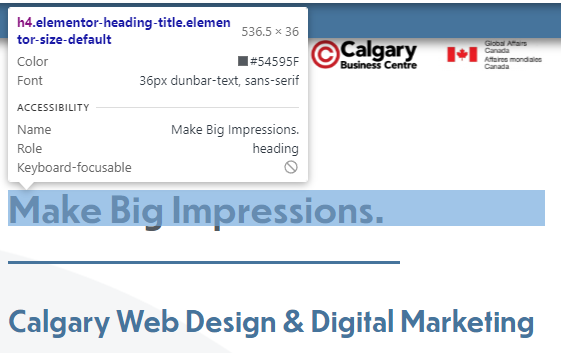
Notice the header with no keywords is ranked as low as an H4.
It is actually the lower header with the key phrases we are looking for marked as the H2.

This is how it would look on the back end. It is vital to your optimization to make sure you’re paying attention to header tags in order for Search Engines to understand the topic of the page or section.
Body Content
The body content of a webpage should be optimized with relevant keywords and provide valuable information to the user. This includes using short paragraphs, bullet points, and other formatting elements to make the content easy to read and understand.
At Innovate Media Canada we use AI to test your text in real time against the Google Algorithm.
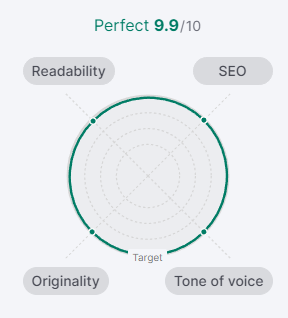
We score your content writing on the following metrics:
Readability: Text with good readability is easy to understand and flows well, while a text with poor readability can be challenging to read and comprehend.
Tone of Voice: This helps us make sure your messaging stays within its values – whether that is educational, professional, creative, or casual.
Originality: We scan the web to compare your writing against all other articles, so even if you utilize AI to help you with your content we can guarantee its originality.
Search Engine Optimization: We use heavy analytics to analyze the top 1,000 websites in your industry to find out what keywords to focus on and the difficulty/saturation of those keywords. We then help include any semantic keywords or variations in your content to avoid cannibalization.
We compare your writing, articles, and blogs against your top competitors as well. Whether you need to rank locally, nationally, or internationally – we’ve got you covered.
*Cannibalization refers to the overuse of a keyword or phrase within a page and can negatively affect your rankings and cause search engines and crawlers to omit it completly
Meta Data
Meta data, including title tags and meta descriptions, provide additional information about the content on a webpage to search engines. Optimizing these elements with relevant keywords and compelling copy can help to improve search engine rankings.

Meta data is going to be displayed in any normal search snippets. Look at the photo above:
- The blue would represent the H1 heading of our home page.
- The red would represent the Meta Description for that specific page.
- Lastly, the green is the H1 header to our web design page – which google is suggesting as an additional site link.
Internal Links
Internal links refer to links between pages on the same website. These can help to improve the navigation of a website and make it easier for search engines to crawl and index the site. Businesses can optimize internal links by using descriptive anchor text and linking to relevant pages on their site.
You can also gain some additional credibility by providing external links to various trusted sources like Wikipedia.ca. This is great when citing a source, showing data, or mentioning another business/article.
Examples of On-Page SEO Optimization
There are several best practices for optimizing each element for on-page SEO. For example, businesses can optimize headings by using descriptive, keyword-rich headings that accurately reflect the content on the page. Here are some ways to make sure you are doing the best job:
- Including relevant keywords in the content
- Using short paragraphs
- Using bullet points to make the content easy to read
- Providing valuable information to the user
- Educational blog posts
- Optimize internal links with descriptive anchors
By optimizing each element of a site you can improve your SEO Optimization and attract the desired clients to your page.
What is Schema Markup?

*This photo is an example of a Rich Snippet on Google. Search crawlers read schema markup to learn if the page has a Rich Snippet layout for the SERPs.
**SERP stands for Search Engine Results Page
Schema markup is a type of code that should be added to certain content on websites to help search engines properly display content from your site to people actively searching. Rich snippets can include a variety of additional information beyond normal search results, such as:
- Photos
- Maps
- Meta data such as author, date, or reviews
These are called “rich snippets” and they can play a vital role in gaining trust in a consumer prior to them even visiting your site. You can actively test either your code or live site for their eligibility using the google Rich Results Test.
What is Schema Markup?
There are several different types of schema markup that are applicable to niche types of content. Some of the most common types of schema markup include:

(here you can see an example of two product snippets. Only one of them has a review schema in it’s code. Can you tell how the two of them together create a more credible source?)
Ratings
Ratings schema markup can be used to display star ratings for products or services on a webpage. This can help to improve click-through rates and attract more traffic to the website.
Reviews
Reviews schema markup can be used to display reviews or testimonials from customers on a webpage. This can help to build trust and credibility with potential customers, and ultimately lead to more sales.
Articles
Schema markup for articles can be used to provide additional information about a news article, blog post, or other type of written content. This can include information such as the headline, author, date published, and image thumbnail. This can add to your SEO ranking factor to improve visibility of your blog or news site.
Product Descriptions
Product descriptions schema markup can be used to provide additional information about a product, such as its price, availability, and specifications. This can help search engines make sure you’re showing up when your clients search for your product.
In addition, businesses can optimize their schema markup by using descriptive language and providing accurate and up-to-date information.
How On-Page SEO and Schema Markup Work Together
So you’ve made it this far, let’s dive into how these two things work together in synergy to create:
- On-page SEO focuses on making it easier for Google to understand the elements on the page itself.
- schema markup provides additional information about the content in a format that search engines can easily understand.
Using Schema Markup with On-Page SEO Elements
Here is a quick review and summary of the two topics.
Schema helps change how your information is displayed to clients by making you eligible for a rich snippet.
On Page SEO allows you to help a search engine decide what information to look at first.
Together you can make sure the crawler sees the info as valuable, and knows how to display it in order to increase your sites/products/blogs credibility.
Body Content
Let’s say a business has a blog post about the benefits of using their product. To help search engines better understand the content and its relevance to user search queries, they could add schema markup to the body content to provide additional information about the author and date published. This might look something like:
<p>This blog post was written by <span itemprop=”author”>John Smith</span> on <span itemprop=”datePublished”>2023-04-20</span>. In this post, we’ll be discussing the many benefits of using our product for businesses of all sizes.</p>
This can help to improve the relevance of the content for user search queries. It can be a difficult task to undertake, and we do not recommend this to anyone who does not have a general understanding of web development.
The Benefits of Using On-Page SEO and Schema Markup Together
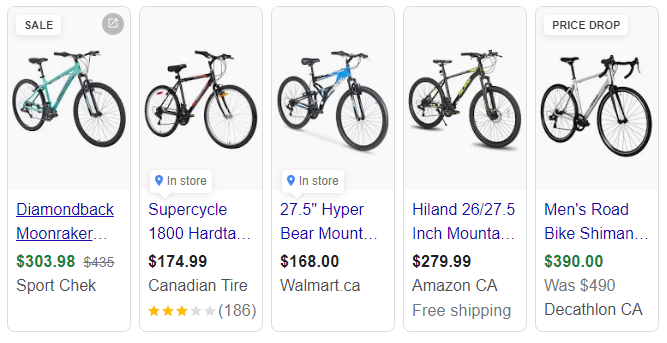
Example 1: Ecommerce
An ecommerce store that sells clothing online can use schema markup and on-page SEO together in the following ways:
Incorporate product schema markup into the product pages to provide additional information to search engines about the products being sold. This could include:
- price
- availability
- reviews
*Protip: have your social media marketer incorporate these into your posts for relevancy! Can also be used to help create sites for affiliate marketing

Example 2: Realtor Listings
A real estate agency can use schema markup and on-page SEO together in the following ways:
- Provide additional information to search engines about the business, such as the address, phone number, and hours of operation.
- Optimize the on-page content, such as the headings and body content, to include relevant keywords and provide valuable information about the real estate properties being sold or rented. This can help to improve the relevance and quality of the content for both users and search engines.
- Use property schema markup to provide additional information about each property, such as the price, location, and number of bedrooms and bathrooms.
*Protip: Use a real estate DDF like Realtypress to have the schema prewritten for this.
Actionable Tips for On-Page SEO and Schema Markup
Use Descriptive Headings
Using descriptive headings, such as H1, H2, and H3, can help to organize the content on a webpage and make it easier for both users and search engines to understand the structure of the page. Be sure to include relevant keywords in the headings to improve the relevance of the content for user search queries.
Include Keywords in Body Content
Including relevant keywords in the body content of a webpage can help search engines to better understand the context and meaning of the content, and improve its relevance for user search queries. Be sure to use the keywords naturally, without overstuffing them into the content.
Use Schema Markup to Enhance Content
Using schema markup to enhance content can help to provide additional information to search engines about the content on a webpage. This can include information such as ratings, reviews, and product descriptions. By using schema markup effectively, businesses can improve their search engine rankings and attract more traffic to their websites.
Use Schema Markup to Enhance Content
A large part of optimizing your site to better rank comes down to the content. High quality content that is niche to your product or service is viewed as more valuable as vague and generic writing. Some tips for creating high-quality content include:
- Conducting keyword research to identify relevant keywords and topics to target
- Writing content that is informative, engaging, and provides value to the user
- Using multi media, such as images and videos, to enhance the content and provide additional information to the user
- Updating content regularly to keep it fresh and relevant
Using these tips and tools you will get not only more visitors, but you will better understand their search intent as well. By creating content that is useful for both users and search engines you can guarantee your site to move up in the ranks while also providing value and information.
Stay tuned for our next two blogs, that dive deeper into the Schema Markup & SEO with some real life examples.
Jordan Geske
CEO & Founder